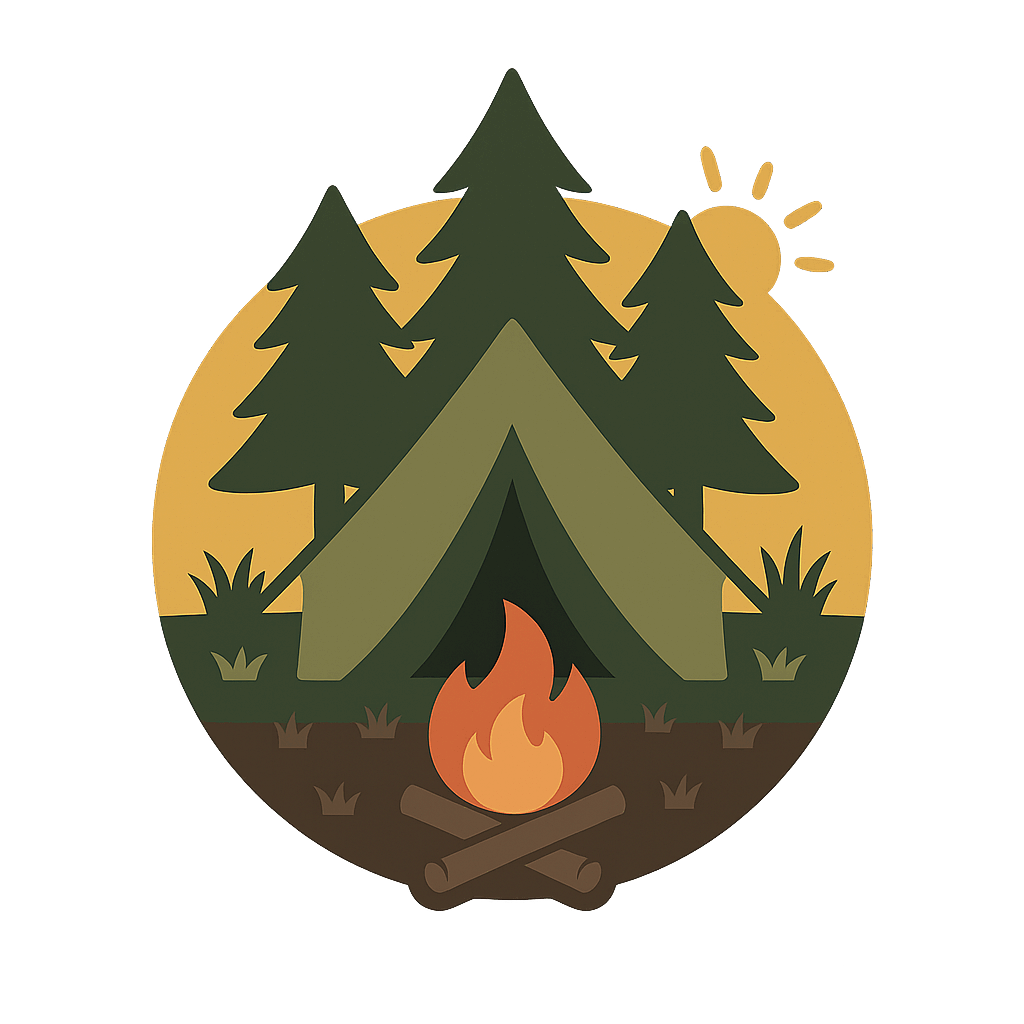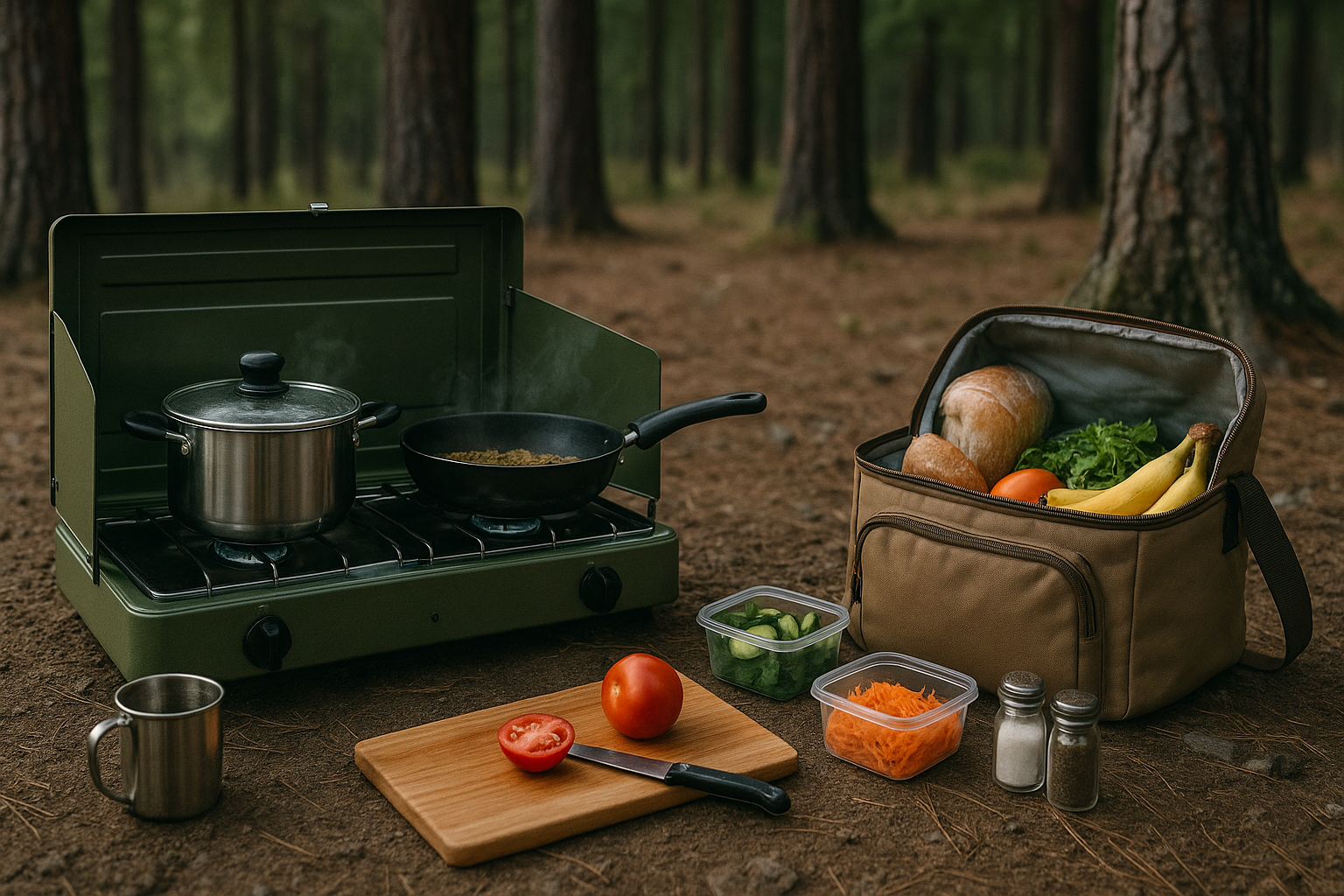You’ve arrived at your campsite, excited to cook dinner—only to realize you’re surrounded by rocks, dirt, and trees, with no flat surface in sight.
There’s no picnic table. No folding counter. No fire ring.
But that doesn’t mean you can’t build a functional, efficient camping kitchen using what nature provides—and a few smart tricks from seasoned campers.
This guide covers real-life hacks for turning any patch of wilderness into a camp kitchen, no table or counter required.
🚫 The Problem: Cooking Without a Table or Counter
- No stable, flat surface for prepping food or holding a stove
- Gear gets dirty from direct contact with dirt or sand
- Increased risk of spills, contamination, or burns
- Harder to organize tools, ingredients, and cooking equipment
- Physical strain from stooping or balancing gear on uneven terrain
🌲 1️⃣ Use Natural Features to Your Advantage
Nature provides plenty of ready-made solutions if you know where to look.
✅ Flat Rocks or Logs
- Seek out broad, stable rocks or tree stumps to use as mini countertops.
- Place your stove, prep gear, or cutting board on these.
- Use a towel or cloth to stabilize wobbly surfaces.
✅ Tree Branches for Hanging Gear
- Use strong branches as “hooks” for hanging pots, utensils, or lightweight bags.
- Paracord or spare rope can create a hanging pantry for dry goods or utensils.
✅ Dig a Mini Pit Counter
- Dig a shallow, flat-bottomed pit in soft soil.
- Line with a tarp or plastic sheet.
- Place gear inside the pit for stability and some wind protection.
🏞️ 2️⃣ Compact Gear That Replaces a Table
When you don’t have a table, smart packing becomes crucial.
✅ Collapsible or Roll-Up Table
- Invest in ultralight models like Helinox Table One or TREKOLOGY folding tables.
- Packs small, sets up anywhere, and keeps gear off the ground.
✅ Cutting Board with Folding Legs
- Use a sturdy cutting board with fold-out legs or bring a portable cook station board.
✅ Stacked Crates or Buckets
- Pack empty crates or sturdy buckets and stack them to create a makeshift counter.
- Use them for prep surfaces, gear storage, or even as makeshift chairs.
🍳 3️⃣ Clever Layout Tricks for a Stable Kitchen
Even without tables, you can organize an efficient workflow:
🪑 U-Shape Layout
- Arrange your cooking area like a U:
- One side for the stove
- One side for prep
- One side for storage (cooler or food bins)
- Sit or kneel in the center to manage everything within arm’s reach.
🪵 Layered Cooking Zones
- Place high items (like a crate or log) for your stove or hot gear.
- Use lower levels (ground or pit) for coolers, dry food, and non-cook items.
🧺 Use Dry Bags as Support
- A filled dry bag makes a great stabilizer for pots, pans, or stoves.
🔥 4️⃣ Cooking Without a Counter? Safe and Stable Setup
✅ Use a Stable Stove Base
- Place your stove on a rock or flat surface.
- If on soft ground, use a wide cutting board or spare tent footprint as a base.
✅ Create Wind Shields
- Use logs, rocks, or a reflective blanket to shield your stove from wind.
✅ Secure Fuel Lines and Canisters
- Keep canisters upright and protected from tipping.
- Use tent stakes or rocks to anchor fuel lines if needed.
🍽️ 5️⃣ Organize Your Camp Kitchen Without a Table
✅ Hanging Pantry
- Hang a mesh bag or dry sack from a tree to store snacks, utensils, and lightweight gear.
✅ Ground Tarp “Counter”
- Spread a clean tarp or groundsheet to organize food and tools.
- Use color-coded bins or dry bags to separate categories: cooking gear, utensils, trash.
✅ Trash Control
- Designate one bag or bucket for waste. Hang it high or place it away from the kitchen area to avoid critters.
🧠 Pro Tips from Field Experts
🏕️ “A flat rock with a non-slip mat became my go-to kitchen counter in Utah. It held a full pot of pasta and my stove.”
— Jess M., desert camper
🏕️ “We dug a shallow pit, lined it with plastic, and used it as a prep station. No wind, no spills.”
— Mark T., backpacker
🏕️ “Paracord is magic. I hang utensils, towels, and even a mesh pantry from tree branches when there’s no table.”
— Lena K., forest hiker
🧳 Essential Gear Checklist for Table-Free Cooking
| Item | Purpose |
|---|---|
| Paracord or strong rope | Hanging gear, food storage |
| Collapsible table or cutting board | Stable cooking surface |
| Sturdy tarp or groundsheet | Clean prep area |
| Dry bags or bins | Organized storage |
| Ultralight stove with stabilizer | Safe, level cooking |
| Compact wind shield | Protect flame and conserve fuel |
| Folding bucket or crate | Makeshift counter or sink |
| Eco-friendly soap and wipes | Easy cleanup |
🌿 6️⃣ Leave No Trace, Even Without a Table
- Pack out all waste, including used water and soap.
- Disperse wastewater 200+ feet from water sources.
- Don’t disturb natural features permanently. Refill pits and remove any makeshift supports when you leave.
🌄 Conclusion: Build a Camp Kitchen Anywhere
Lack of a table or counter doesn’t mean chaos.
With a mix of natural features, compact gear, and clever layout tricks, you can create a functional, safe, and efficient camping kitchen anywhere in the wild.
🔥 Plan ahead: Bring lightweight tools like tarps, paracord, and nesting crates.
🔥 Adapt to your site: Use rocks, logs, and even shallow pits for stability.
🔥 Stay organized: A clean layout prevents spills, saves time, and keeps critters away.
Because when you’re in the wild, the best kitchen isn’t the one you bring—it’s the one you build.
👉 Bookmark this guide for your next adventure and share it with your camping crew!

